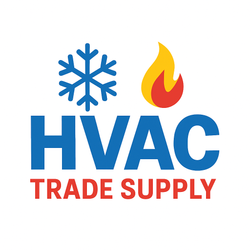0412 333 115
0412 333 115
Robinair Premium Refrigerant Charging Hoses are built for long life and dependability. A strong, six-sided crimp provides a reliable connection bet...
View full detailsSuitable for r410a Mastercool uses only (GRADE 5 HOSE) with a selection of Standard and Nylon Barrier for high-pressure applications. Knurled brass...
View full detailsMastercool uses only (GRADE 5 HOSE) with a selection of Standard and Nylon Barrier for high-pressure applications. Knurled brass nuts make finger-t...
View full detailsGet authentic, genuine, long-lasting refrigerant charging hoses for HVAC and refrigeration—even in tough Aussie worksites and high-pressure systems.
Browse trusted brands like Mastercool, Javac, Robinair, Fieldpiece, Imperial, Hydrocell, Yellow Jacket, Inficon, and Neutronics to find the right hoses and fittings for your job.
Prefer to shop locally? See our sister store’s refrigerant hoses collection for a curated range of charging hoses, evacuation lines, and accessories.
Charging hoses connect your manifold gauges to the system for adding refrigerant, recovering, or pulling a vacuum. They’re colour-coded for quick, safe setup and sized to balance flow with control.
These flexible, reinforced hoses are used to charge or discharge refrigerant and to measure system pressures when paired with a manifold gauge set.
Adapter and fitting sizes vary by system and refrigerant. Some hoses are optimized for high-pressure blends, others for vacuum/evacuation or low-pressure transfer.
Rubber construction keeps hoses flexible, so they route cleanly without cracking during service.
Most sets include three colour-coded hoses:
The red/blue lines let you monitor pressures, diagnose restrictions or low refrigerant, and verify performance.
During the cooling cycle, refrigerant changes pressure, temperature, and state. Hoses must remain tight and durable to prevent leaks, resist permeation, and handle vibration and heat around engines or condensers. Quality hoses also keep connections secure with the right fittings for your vehicle or stationary system.
Common inside diameters include 1/4", 3/8", and 5/16". Evacuation work benefits from larger-ID hoses for faster flow, while high-side lines typically use smaller diameters. Typical lengths are 90–180 cm (3–6 ft) for easy port reach.
Inspect seals and gaskets regularly. Avoid over-tightening (the #1 cause of split seals), check for flattening or wear, and replace when needed. If you notice vacuum performance issues or pressure drops, inspect hoses and core tools for leaks.
Low-side hoses see lower pressures but still age from heat and oil exposure; replace at the first sign of cracking. High-side hoses carry high pressure and work the hardest—watch for bulges, kinks, or damage and swap immediately if found.
Match hoses to the refrigerant and fittings you use (e.g., R32/R410A high-pressure compatibility). Colour coding (red/blue/yellow) helps prevent mix-ups.
Use charging hoses for adding refrigerant, evacuation hoses for high-flow vacuum, and test/pressure lines as specified by your manifold or digital gauges.
Further reading & related ranges:
{"one"=>"Select 2 or 3 items to compare", "other"=>"{{ count }} of 3 items selected"}
